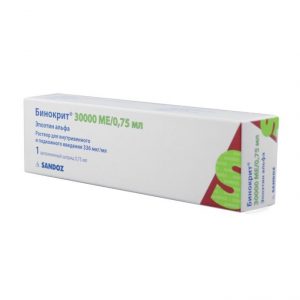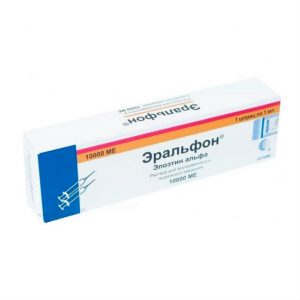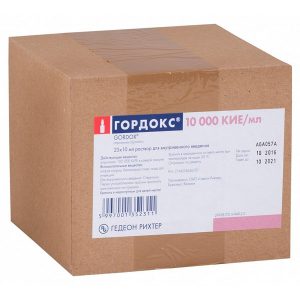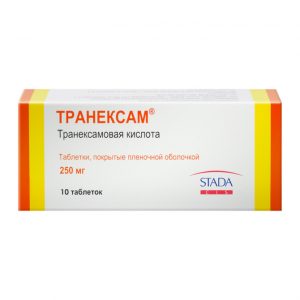Description
Latin name
Tranexam
Release form
250 mg film-coated tablets. On 10 tablets in a blister strip packaging from a film of polyvinyl chloride and a printed aluminum foil varnished. 1, 2, 3, 5 blisters for packaging along with instructions for use are placed in a pack of cardboard.
Pharmacological action
Antifibrinolytic agent. Tranexamic acid specifically inhibits the activation of profibrinolysin (plasminogen) and its conversion to fibrinolysin (plasmin). It has local and systemic hemostatic effects in bleeding associated with increased fibrinolysis (platelet pathology, menorrhagia). Also, tranexamic acid, due to the suppression of the formation of kinins and other active peptides involved in allergic and inflammatory reactions, has anti-allergic and anti-inflammatory effects.
Pharmacokinetics
Oral absorption in the range of 0.5-2 g – 30-50%. The onset time of the maximum concentration when taken orally is 0.5, 1 and 2g – 3 hours, the maximum concentration is 5, 8 and 15 μg / ml, respectively. Communication with plasma proteins (profibrinolysin) – less than 3%.
Distributed in the tissues relatively evenly (with the exception of cerebrospinal fluid, where the concentration is 1/10 of the plasma) penetrates the placental barrier into breast milk (about 1% of the concentration in the mother s plasma). It is found in seminal fluid, where it reduces fibrinolytic activity, but does not affect sperm migration. The initial distribution volume is 9-12 liters. The antifibrinolytic concentration in various tissues lasts 17 hours, in the plasma – up to 7-8 hours.
A small part is metabolized. The area curve under the curve has a three-phase shape with a half-life in the final phase of 3 hours. The total renal clearance is equal to the plasma (7 l / h). It is excreted by the kidneys (the main way is glomerular filtration) – more than 95% unchanged during the first 12 hours.
2 metabolites of tranexamic acid were identified: N-acetylated and deaminated derivative. With impaired renal function, there is a risk of cumulation of tranexamic acid.
Indications
Bleeding or risk of bleeding on the background:
increased local fibrinolysis (uterine, including with von Willebrand disease and other coagulopathies, nasal, gastrointestinal bleeding, hematuria, bleeding after prostatectomy, cervical conization for cancer, tooth extraction in patients with hemorrhagic diathesis)
enhance generalized fibrinolysis (malignant neoplasms of the pancreas and prostate, chest surgery, postpartum hemorrhage, manual separation of the placenta, leukemia, liver disease).
Bleeding during pregnancy.
Hereditary angioedema, allergic diseases (eczema, allergic dermatitis, urticaria, drug and toxic rash).
Inflammatory diseases (tonsillitis, pharyngitis, laryngitis, stomatitis, aphthae of the oral mucosa).
Contraindications
Hypersensitivity to the drug, subarachnoid hemorrhage.
With caution
With caution, the drug is prescribed for thrombosis (cerebral vascular thrombosis, myocardial infarction, thrombophlebitis) or a threat of their development, with thrombohemorrhagic complications (in combination with heparin and indirect anticoagulants), color vision, hematuria from the upper waterway blood clot obstruction is possible), renal failure (cumulation is possible).
Pregnancy and lactation
There have been no adequate and strictly controlled clinical trials of the safety of tranexamic acid during pregnancy, so the intended benefit and potential risk of therapy should be carefully evaluated when prescribed.
Special instructions
Before starting and during treatment, an oculist should be examined for visual acuity, color perception, and fundus status.
In animal studies, no teratogenic and embryotoxic effects were detected.
Dosage and Administration
Inside.
With local fibrinolysis, 1000 to 1500 mg are prescribed 2-3 times a day.
With profuse uterine bleeding, 1000 to 1500 mg are prescribed 3-4 times a day for 3-4 days.
With bleeding due to von Willebrand disease and other coagulopathies, 1000-1500 mg 3-4 times a day. The duration of treatment is 3-10 days.
After conization of the cervix, 1,500 mg are prescribed 3 times a day for 12-14 days.
For nosebleeds, 1000 mg is prescribed 3 times a day for 7 days. Patients with coagulopathies after tooth extraction are prescribed 1000-1500 mg 3-4 times a day for 6-8 days.
With bleeding during pregnancy, 250-500 mg 3-4 times a day until the bleeding stops completely. The average duration of treatment is 7 days. With hereditary angioedema, 1000-1500 mg are prescribed 2-3 times a day, constantly or intermittently, depending on the presence of prodromal symptoms. With symptoms of allergies and inflammation, 1000-1500 mg 2-3 times a day for 3-9 days, depending on the severity of the condition.
In generalized fibrinolysis, therapy is started with parenteral (intravenous) administration of Tranexam followed by oral administration of 1,000 to 1,500 mg 2-3 times a day.
In case of impaired renal excretory function, a dosage adjustment is necessary: at a blood creatinine concentration of 120-250 μmol / L, 1000 mg is prescribed 2 times a day at a creatinine concentration of 250 – 500 μmol / L, 1000 mg is prescribed 1 time per day at creatinine more than 500 μmol / l is prescribed 500 mg 1 time per day.
Side effects of
When taking the drug, nausea, vomiting, heartburn, diarrhea, rash, skin itching, decreased appetite, drowsiness, and dizziness may occur. Color disturbance may occur rarely – thrombosis, thromboembolism.
Drug interaction
When combined with use of hemostatic drugs and hemocoagulase, thrombosis can be activated.
Storage conditions
At a temperature not exceeding 30 ° C. Keep out of reach of children.
The Expiration of
is 3 years.
Active thing
substance Tranexamic acid
lekarstvennaja form
tablets
Pregnant prescribed by a doctor for adults prescribed by a doctor, For children prescribed by a doctor, Nursing mothers
Indications
Indications
Indications
Indications
Indications
gia, Tonsillitis, From nosebleeds, From stomatitis, From laryngitis, Pharyngitis, Urticaria, Eczema, Dermatitis
Obninsk CPA, Russia




